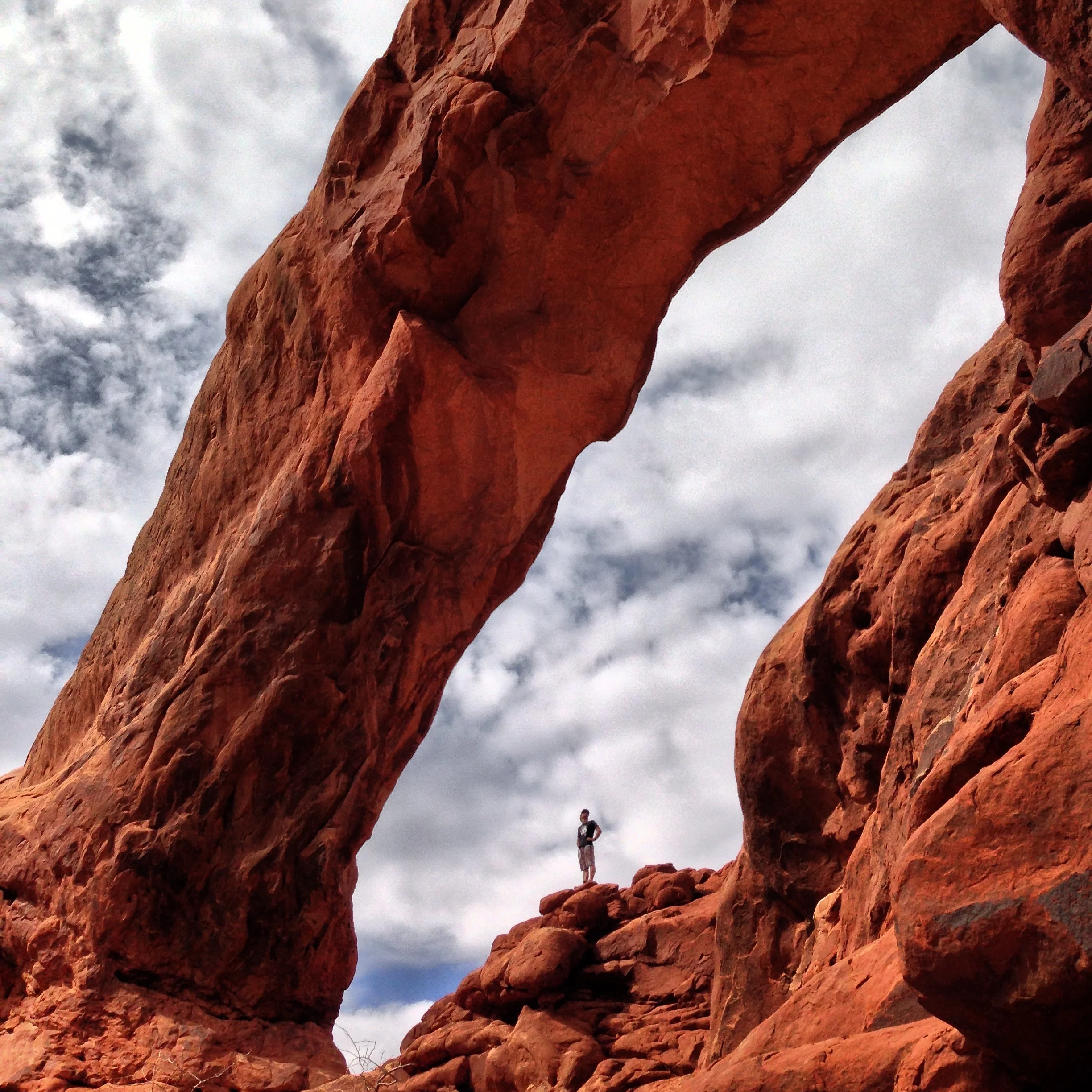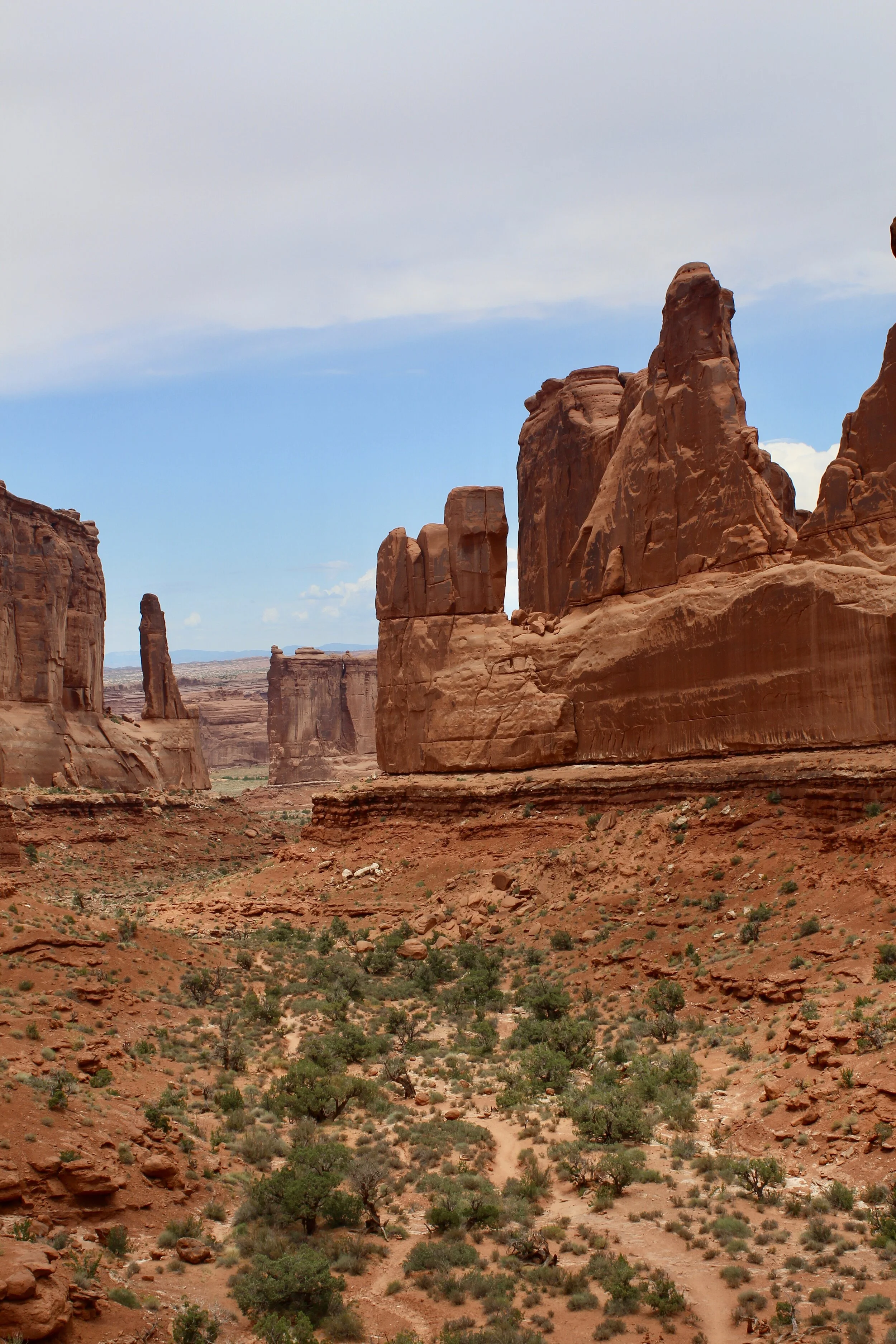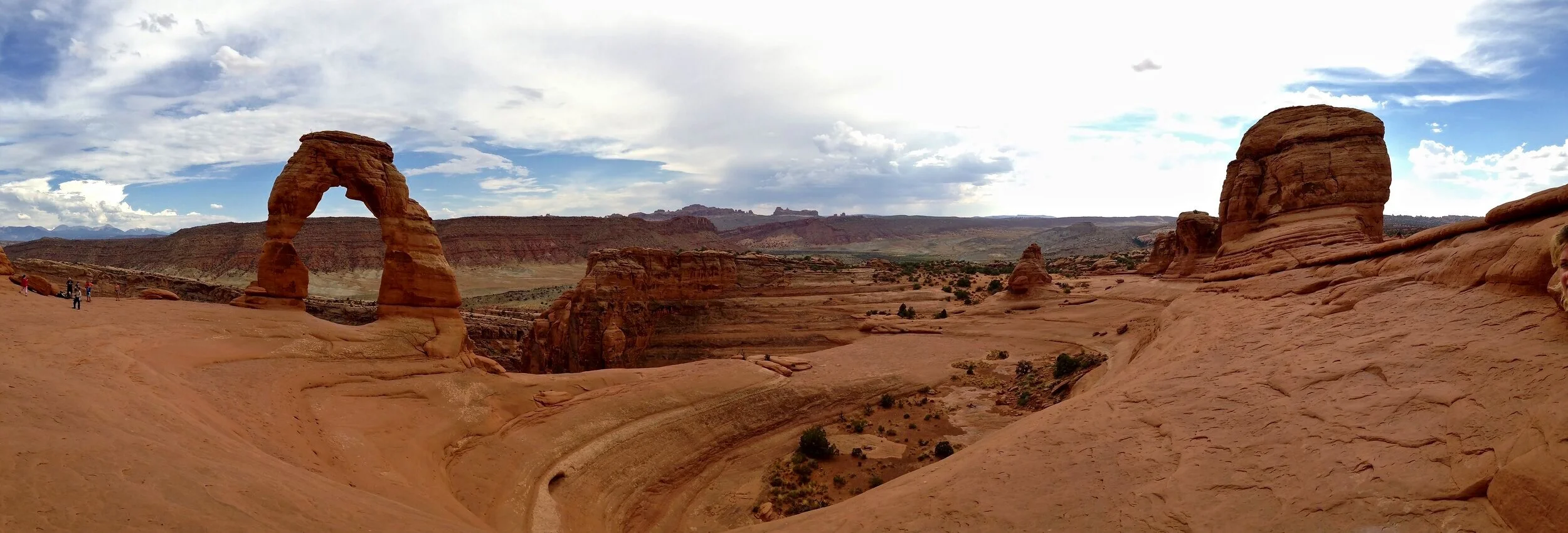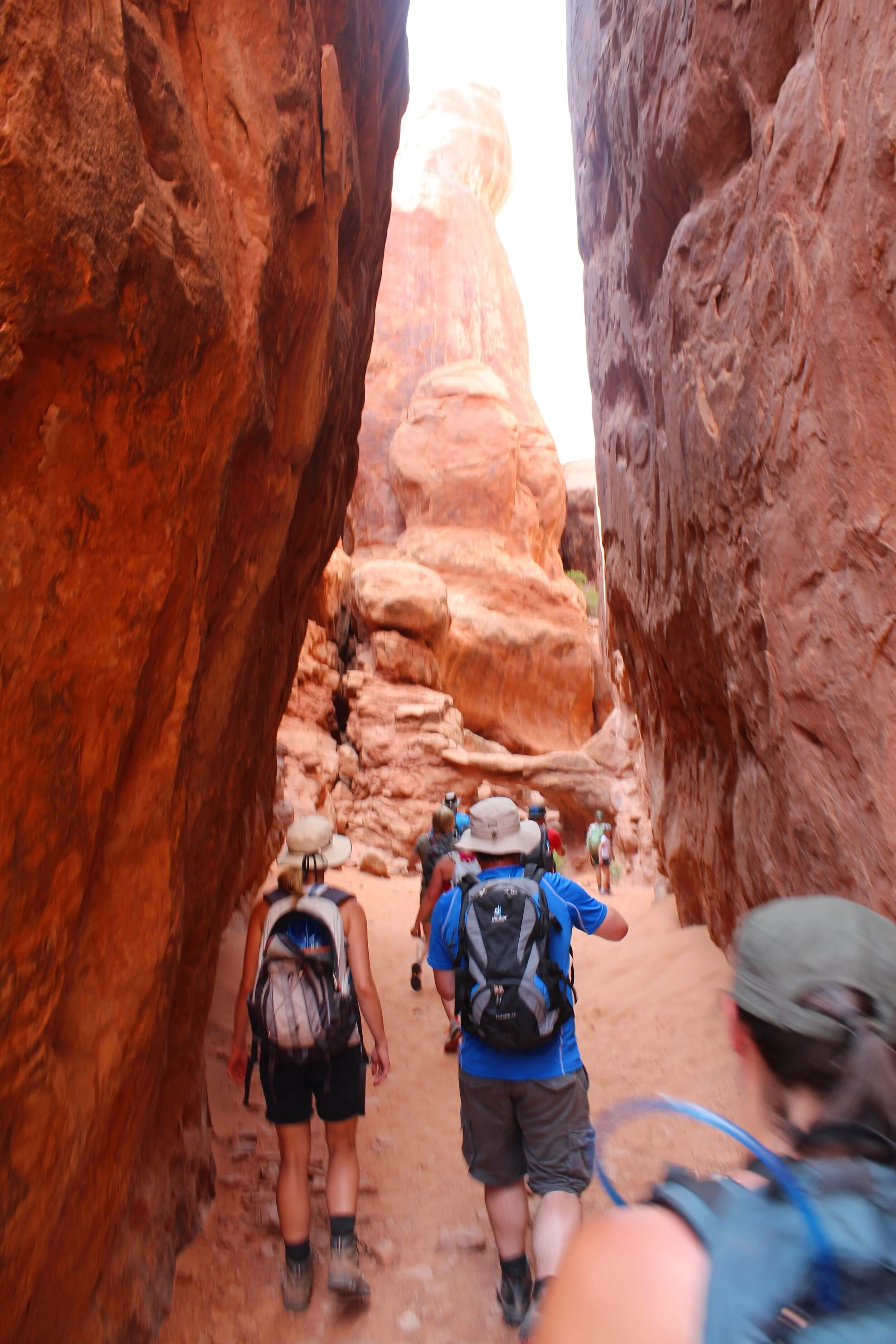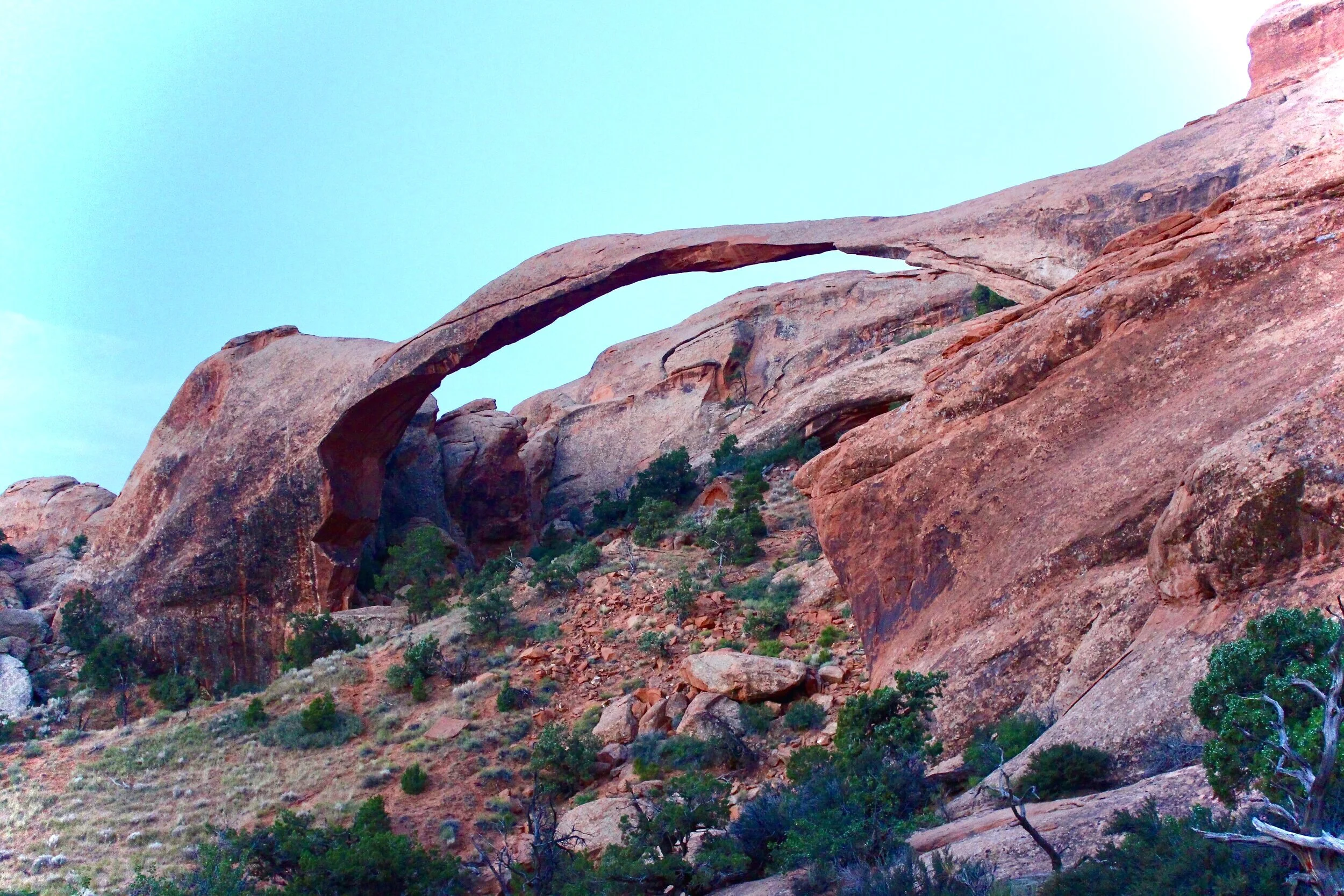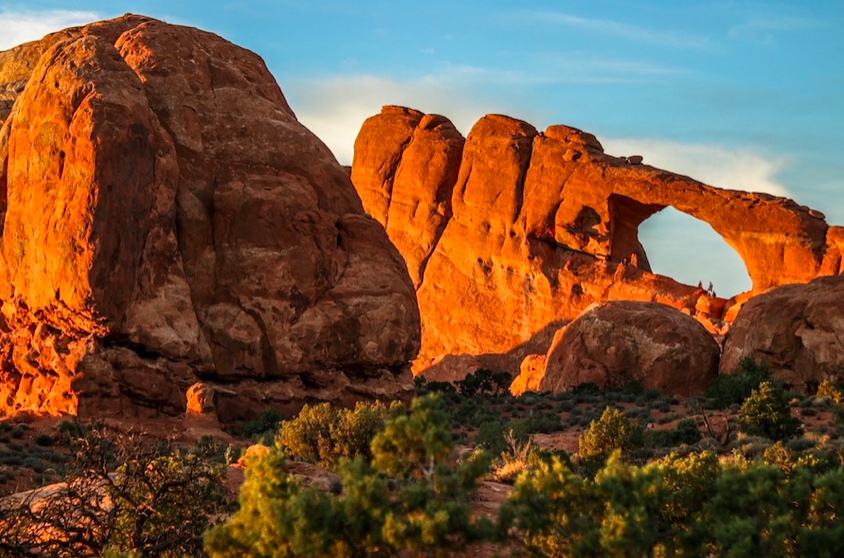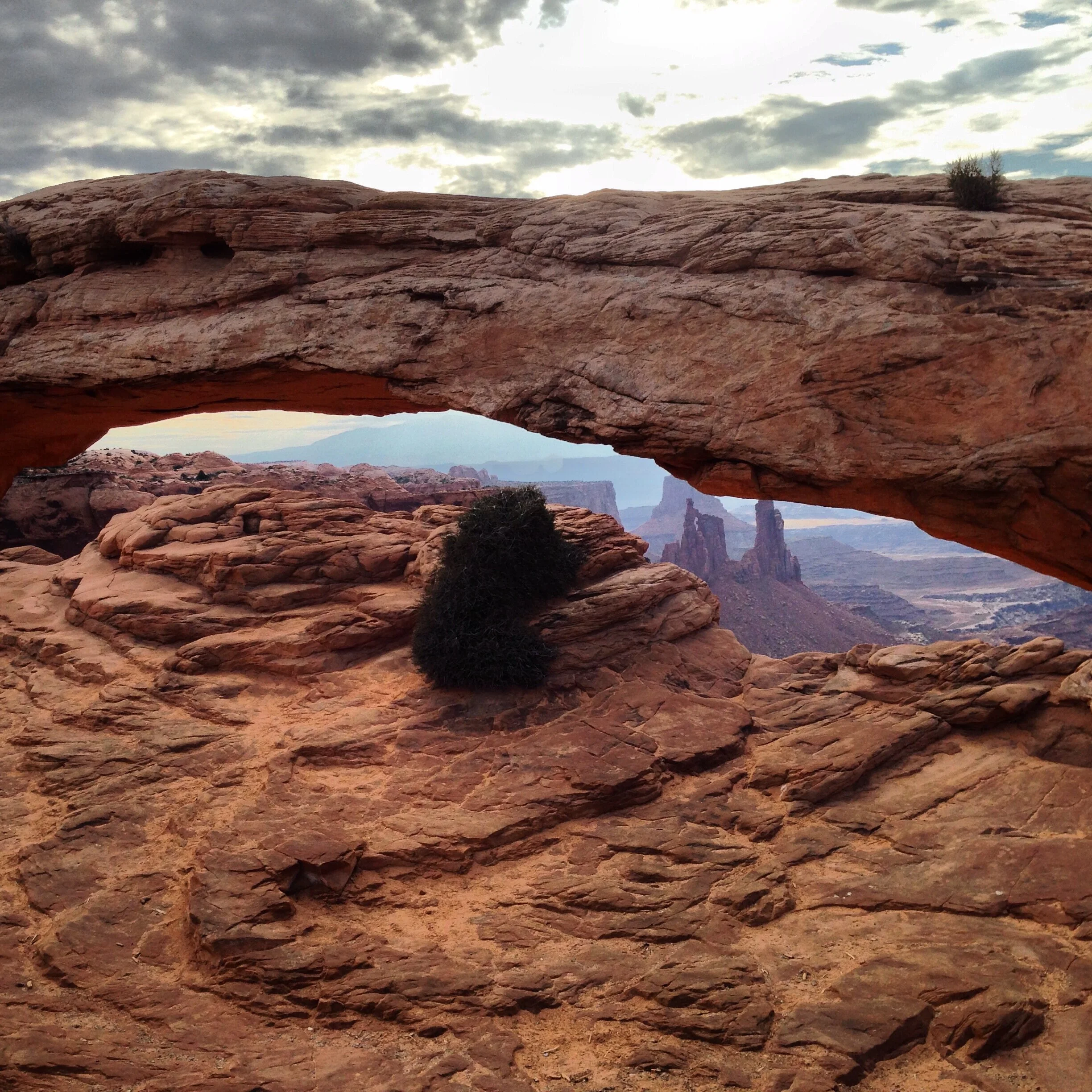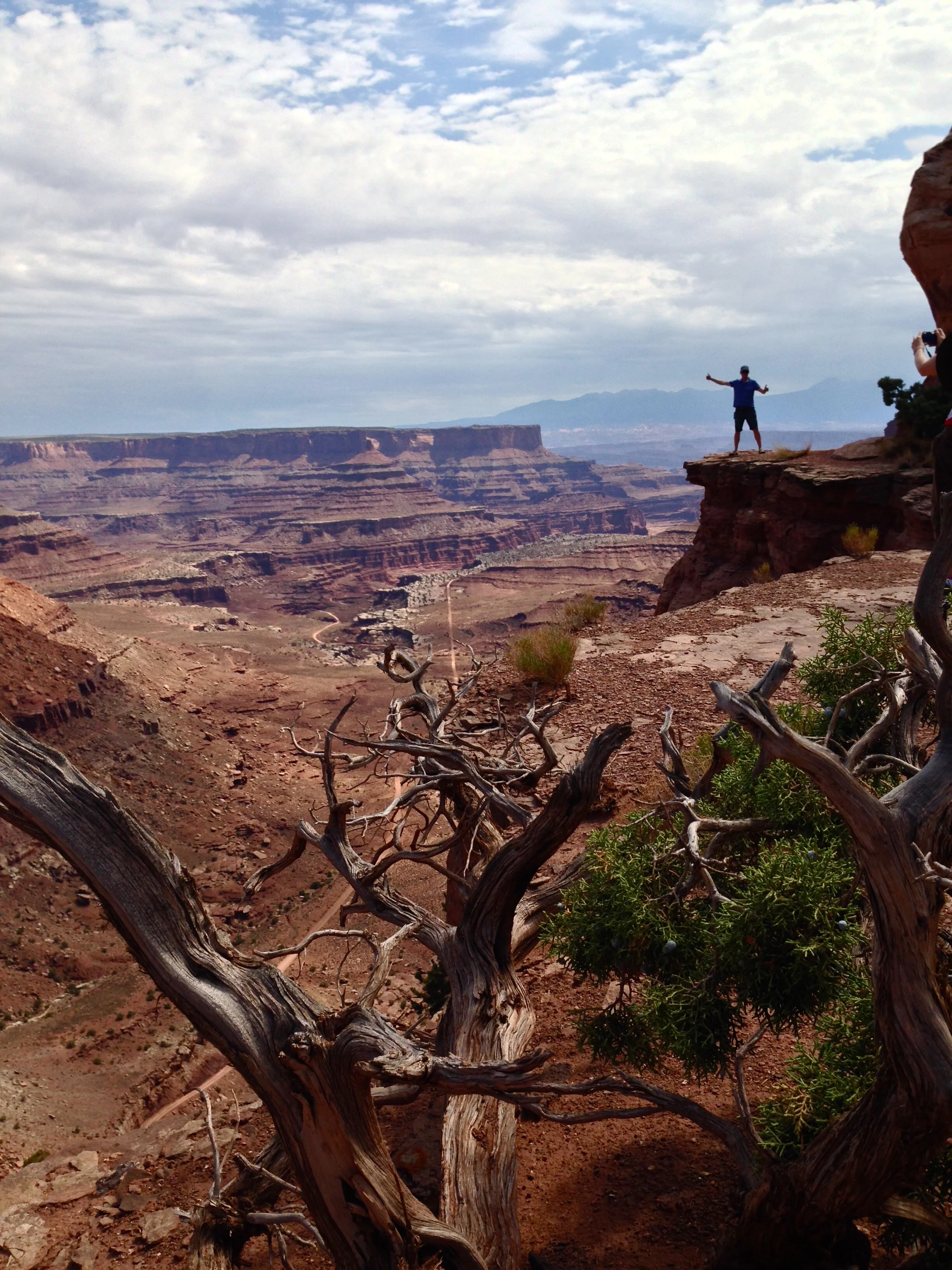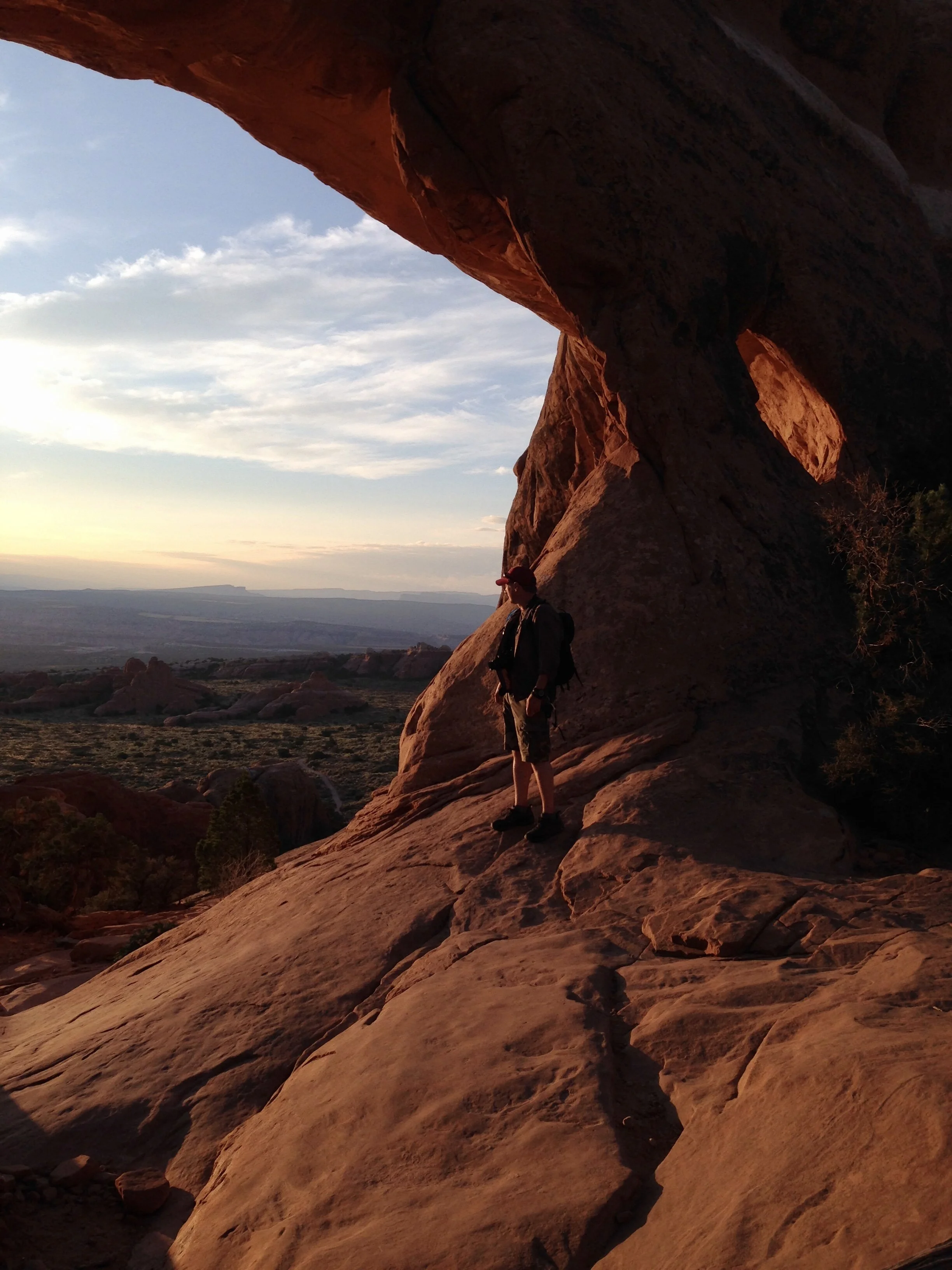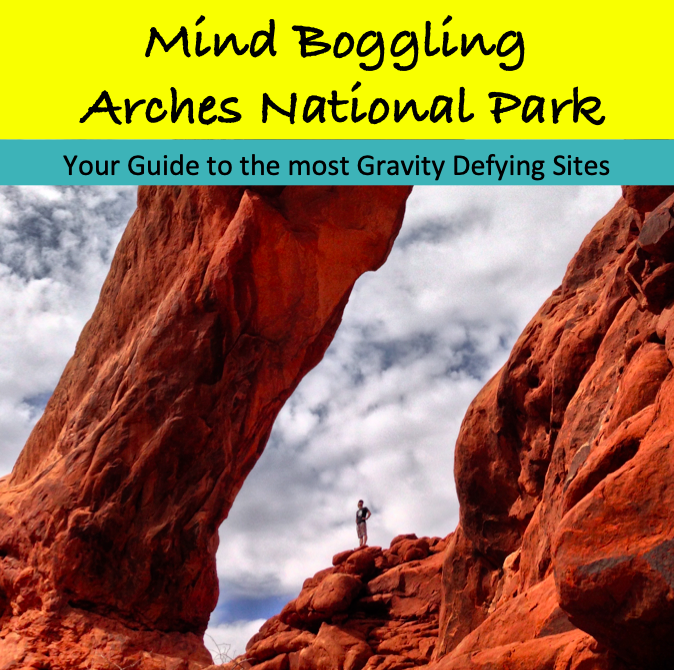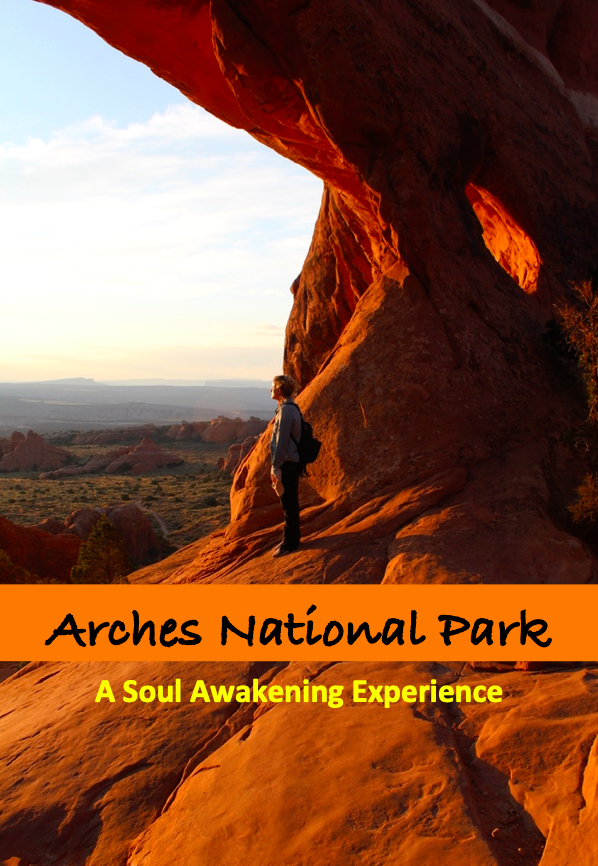Gravity Defying Arches National Park
As we left Aspen, the smell of pine resonated in the air. It was a cool and crisp morning start to our 3 and a half hour drive on Interstate 70 to Moab. We had heard so much about Arches National Park and were curious to see if it lived up to the hype. As we drove out of the mountains we began to see the scenery and climate change. Two hours into our journey, we were bursting from the Big Gulp versions of coffee we drank that morning and decided to make a pit stop. It was a great thing we did, and not just for the obvious reason, but we struck up a conversation with a retiree who was from a town in New Jersey not far from us. He was volunteering at the help desk of the Fruita Welcome Center. He told us about the back way to Moab along the Scenic Byway of Highway 128.
We took his advice and made our way to the exit for Highway 128. After exiting off of Route 70, the road was pretty bad, reminding us of a cow path. We immediately started to question our decision and the advice from our newly made friend. With blind faith we continued in the rental car that would assuredly rattle apart due to the road conditions. We were pleasantly surprised when we found the highway recently paved about fifteen miles from Route 70. From that point on we could enjoy the scenery on the way to Moab and finally remove our kidney belts. The Colorado River flows parallel to 128. As we drove along the river, we marveled at the colors and took advantage of many photo opportunities. The light seemed to dance across the water and illuminate the hills. We were thankful for the advice and found the drive well worth the additional time.
The Colorado River along Scenic Byway 128
There are 59 parks that make up the National Parks system in the United States and in our opinion Arches really impresses. The improbable landscapes look like a Hollywood set. The orange sandstone contrasting against the green pines is spectacular. The park is unique, beautiful and easy to tour as the drive through the park is less than 30 miles and puts you in touch with all the sites. If you have some trepidation about traveling to the Middle East, a trip Arches may be a good substitute. From what I’m told it has a very similar landscape to that of Jordan.
Park Avenue at Arches
The Cost Of Entering The Park
We opted to purchase an America The Beautiful pass last year for $80 US. This affords us the opportunity to forgo the entrance fees at any federal recreation area. We receive free parking when we kayak along the Delaware River which is very close to home and made it well worth it. If you don’t have a America The Beautiful pass, the entrance fee is $25US and is good for seven days. It will also get you into Canyonlands National Park as a side trip we will discuss at the end of this . Remember, you can give your pass to another person to use. They just have to sign the back of the card.
How The Arches Form
There are approximately 2300 arches in the park. Each must have an opening of at least 3 feet in order to be considered an arch. Arches National Park lies above an underground salt bed. Essentially, if you were to step back in time, the formations you see today would have been buried under you. As the landscape slowly changed through erosion, the formations began to appear. According to NPS.gov “As the sandstone warped, fractures tore through it, establishing the patterns for rock formations in the future.” Water is the main reason for the arches and over time the most famous sites will probably tumble and new arches will form. It’s all pretty interesting to me and when you see the formations in person you can’t help but stare in awe. I found myself on many occasions saying; “How the heck is that rock balancing up there?”
General Information For Arches National Park
Located about 6 miles from the town of Moab
Best time to go is in Spring (terrible oppressive during the summer)
Dress appropriately (hiking sneakers, shorts, pants, depending on the weather)
Use the facilities at the trail heads. There are none on the trails.
Cell service in the back country is extremely limited.
Bring in your backpack:
Small first aid kit
One quart of water per person
Pedialyte or Coconut water if hot (electrolytes)
Two Power Bars
A space blanket
Pocket knife
Magnesium fire starter
If you go in the late afternoon or early morning bring a headlamp.
Bring a compass
Have a paper map in case you get lost
Iphone with downloaded trail maps
If you do get lost, pick a waypoint to help you navigate.
KEEP HYDRATED!!!!
Where We Stayed
We stayed at the Holiday Inn Express Hotel & Suites Moab. This is one of the times I’ll tell you that a stay in a chain hotel is a viable option. Most of you know I’m partial to boutique hotels. We found this one to be excellent. It’s a short drive to town and a short drive to the park entrance. It had a friendly staff, a pretty good breakfast to start our day and a pool to cool off in. In addition, there is free WiFi so you can upload all those pictures to social media!!
Photo courtesy of Holiday Inn Express https://www.ihg.com/holidayinnexpress/hotels/us/en/moab/cnymb/hoteldetail
Where We Ate
There were several options available, all of which were equally average. However, the Moab Brewery had an excellent selection of beers and the food was better than most we had experienced. We ended up eating here if we went out. However, most of our meals consisted of salads and fruit which were consumed in the hotel or on the trails. We purchased most of that at the local grocery store!! Go healthy lifestyle!!
The Must See List At Arches National Park
Delicate Arch
Delicate Arch is a breathtaking spiritual experience. You can’t help but ponder your own existence while contemplating universe. It is probably the world’s most famous arch and if you’ve ever seen a book written on the park, it’s probably on the cover. With the arch’s fame, expect lots of crowds on the trails. The hike to the arch is steep but doable, so take your time especially if you do it as we did in 100F temperatures. There are some parts that you can’t believe you’re allowed to walk there due to the steep drop offs. It’s a “real deal” hike and many times you’ll be walking on slick rock following cairns which mark the trail. Also beware of the pit. People have died falling in there. The distance is about three miles round trip.
Funny story: Some Youtube channel came up to me and asked if I would pretend that the arch was stolen for a series they were doing. Of course I said yes. I just could not pass up the opportunity to embarrass my wife and be on a Youtube channel. I wish I could remember their name. Somewhere out there in cyber space there is a humorous video of me screaming at the top of my lungs about someone stealing Delicate Arch.
Fiery Furnace
The only way you can enter the Fiery Furnace is with a Ranger or with a permit. I highly recommend the Ranger hike. The 2 mile Loop hike was $16US per person while the Out and Back hike was $10US. We opted for the loop hike and reserved tickets on www.recreation.gov about six months in advance as the hike is in high demand due to the the Parks Service only gives out 75 passes per day. Yes, you must check in at the visitor center up to four days in advance and at least one hour before the hike begins. The hike is strenuous and if you have some physical limitations this may not be for you. We had to scurry along narrow ledges above drop-offs and over loose sand. The Rangers drill into your head not to destroy the cryptogamic soil. This is because stray footsteps can damage the cryptogamic soil just off the trail. This black crust on the ground Is a living layer that forms the foundation for desert ecosystems. Once stepped on, you kill it therefore destroying the ecosystem. I’m not being dramatic, watch your step. The hike was incredible. The pictures were amazing and the Rangers stole the show with their wealth of knowledge on the ecosystem and rock formations.
Fiery Furnace: Along the Loop Trail with the Ranger.
Landscape and Double O Arches
Evidently the geographer that drew the original maps confused Delicate Arch and Landscape Arch and switched the names. So when you’re visiting Landscape Arch, you’re really at Delicate Arch and vice-versa. We woke up at about 3am and made our way from Moab to the entrance gate and another 19 miles through he park so we could catch sunrise near Double O arch. It’s considerably farther than Landscape arch along the Primitive Loop Trail. Landscape Arch can be reached by a double wide, well maintained 3/4 mile trail from the Devil’s Garden trailhead adjacent to the campground. Landscape arch largest arch in world 290 ft span. It looks so fragile, and is. You can’t get right under it as a huge piece fell off. It was pitch black as we made our way be headlamp on our way past the turn for Landscape Arch. Give yourself lots of time if you go out beyond Landscape Arch as this turns into some serious hiking. If you’re not careful you could find yourself injured pretty easily. We stopped at Landscape Arch on our way back from catching one of the most breathtaking sunrises we have ever seen.
Total miles to Double O Arch: 4 miles
Landscape Arch
Double O Arch
Park Avenue
Having grown up in New York City I was eager to see Park Avenue. This site is close to the entrance of the park and it is full of steep and curvy hills. The parking lot is adjacent to a beautiful area where one can observe the shapes, sizes, and colors of Park Avenue. The trail is nearly 2 miles round trip and considered easy. You’re surrounded by huge rock fin walls and views of Courthouse Towers, the Three Gossips and Tower of Babel. Although New York City will always be my favorite city, Arches’ Park Avenue is way better than the same named Manhattan street!
Skyline Arch
Skyline Arch Trail is short enough to be overlooked when you are planning your trip to Arches, but the impressive rock span at the end of the short trail is worth checking out. Located near the Devils Garden Trailhead this 0.4-mile round trip hike to the base of a sandstone fin that opens in a large elevated natural arch. A sign at the trailhead tells how a large block of sandstone fell from Skyline Arch in 1940, doubling the size of the arch overnight. It’s 71 feet across and 33.5 feet tall. Boulders from the collapse remain, and can be seen below the arch today.
Broken Arch
When I first heard of Broken Arch I thought it was just that; broken. But it is not, in fact it is another beautiful arch that is easy to get to. From the parking lot at Sand Dune Arch it is a hike of about half an hour to get to Broken Arch. One can walk through Broken Arch and take pictures from both sides. Since Broken Arch is not as popular as some of the other arches, it is not busy, yet very pretty and well worth the 1.8 mile hike.
Photo credit @NOAA
Double Arch
Double Arch can be reached and seen right from the road. This is an easier, shorter hike to the base of the magnificent Double Arch as compared to the long and difficult Delicate Arch hike. If you want to climb up the rocks and explore the alcove at the base of the arch then that part is much more physically challenging. It can be strenuous and there is no defined path for those with mobility issues. For those who cannot hike to Delicate Arch this is a great alternative. This natural wonder is absolutely jaw dropping.
Double Arch
Double Arch
Balanced Rock
Balanced Rock is a bit different than some of the other sights at Arches. It’s crazy cool to walk around because it doesn’t seem plausible that this huge stone doesn’t fall. It is another sight that you can see from your car. I absolutely encourage you to walk around Balanced Rock. I just wouldn’t want to be walking around it if it decided to fall.
Balanced Rock
A Side Trip To Canyonlands National Park
Mesa Arch at Canyonlands National Park
Another famous arch that has to be seen if you’re in the Moab area is Mesa Arch in Canyonlands National Park. Mesa Arch is an easy to visit landmark in the Island in the Sky region of the park. This pothole arch spans across the mesa's edge, framing a scenic canyon vista. A short 1 mile hike on the trail brings you right up to Mesa Arch, one of the park's most popular points of interest. The trail ends in front of a beautiful stone that spans 50 feet across the top of a 500-foot vertical cliff. Mesa Arch is classified as a pothole arch because it was formed by surface water that pooled on the sandstone behind the arch, slowly eroding the rock. The result is an arch that dangles across the mesa's edge. Mesa Arch is best seen any time of day but it is particularly magnificent around sunrise or sunset. The trail is well marked and partly on slickrock. Don’t screw around here, there is no fence to prevent a fall off of the 500-foot cliff it sits on.
Mesa Arch Just beyond that opening is the 500 foot drop.
Canyonlands NP Doing stupid things for a photo.
“By the word of the LORD the heavens were made, and by the breath of his mouth all their host.”
Arches National Park was a very spiritual experience for us. It is a true testament to God’s wonder. Even if you’re not a particularly religious person, you can’t help but feel something that can only be explained when you visit. I was reminded that we are only on this planet for a short period of time. Think about it, we are lucky if we get 70 years. I am truly grateful for the crazy life I have and all the unique experiences that have come along with it. We are already planning a return trip.
Pondering my spirituality and faith. I was truly thankful for this experience.


